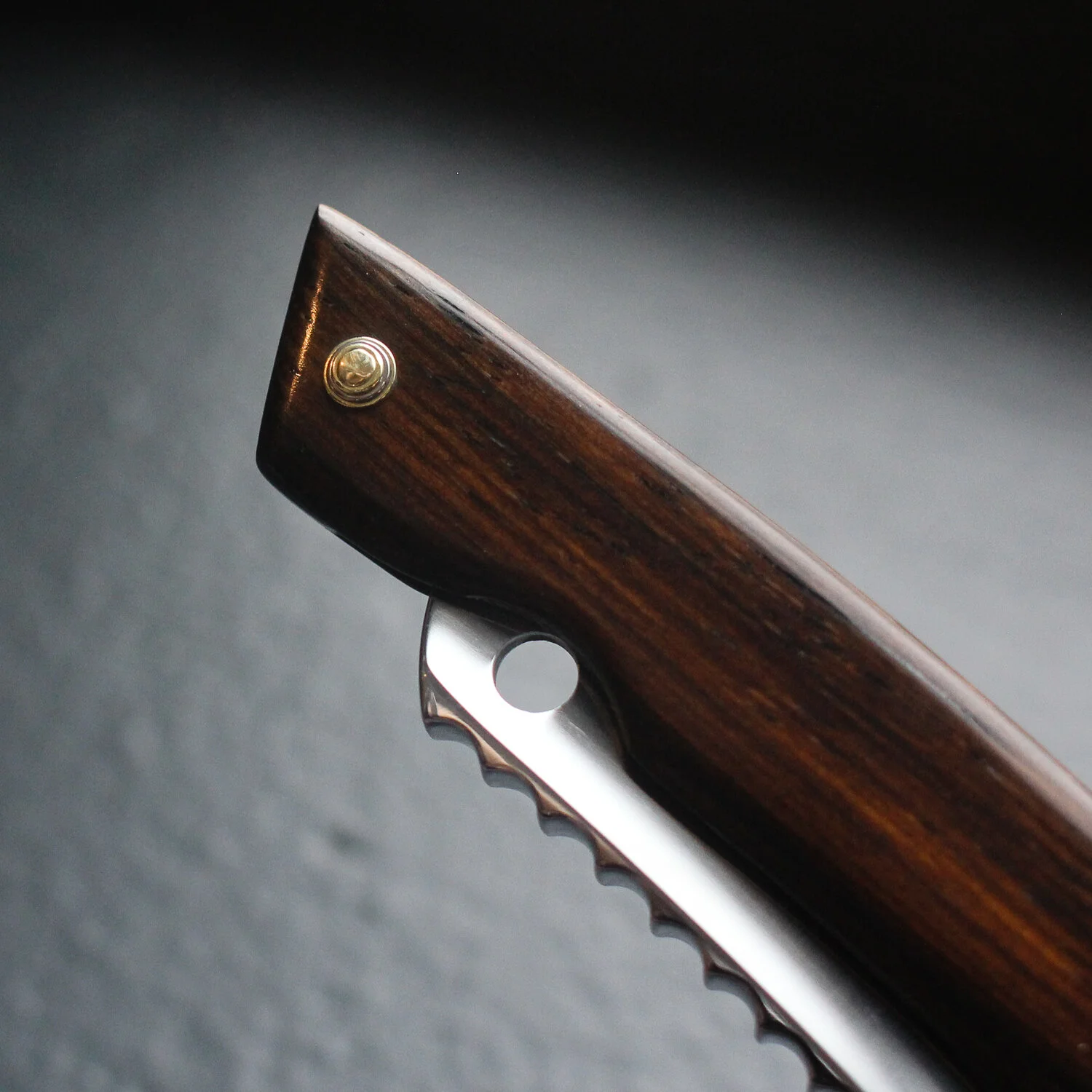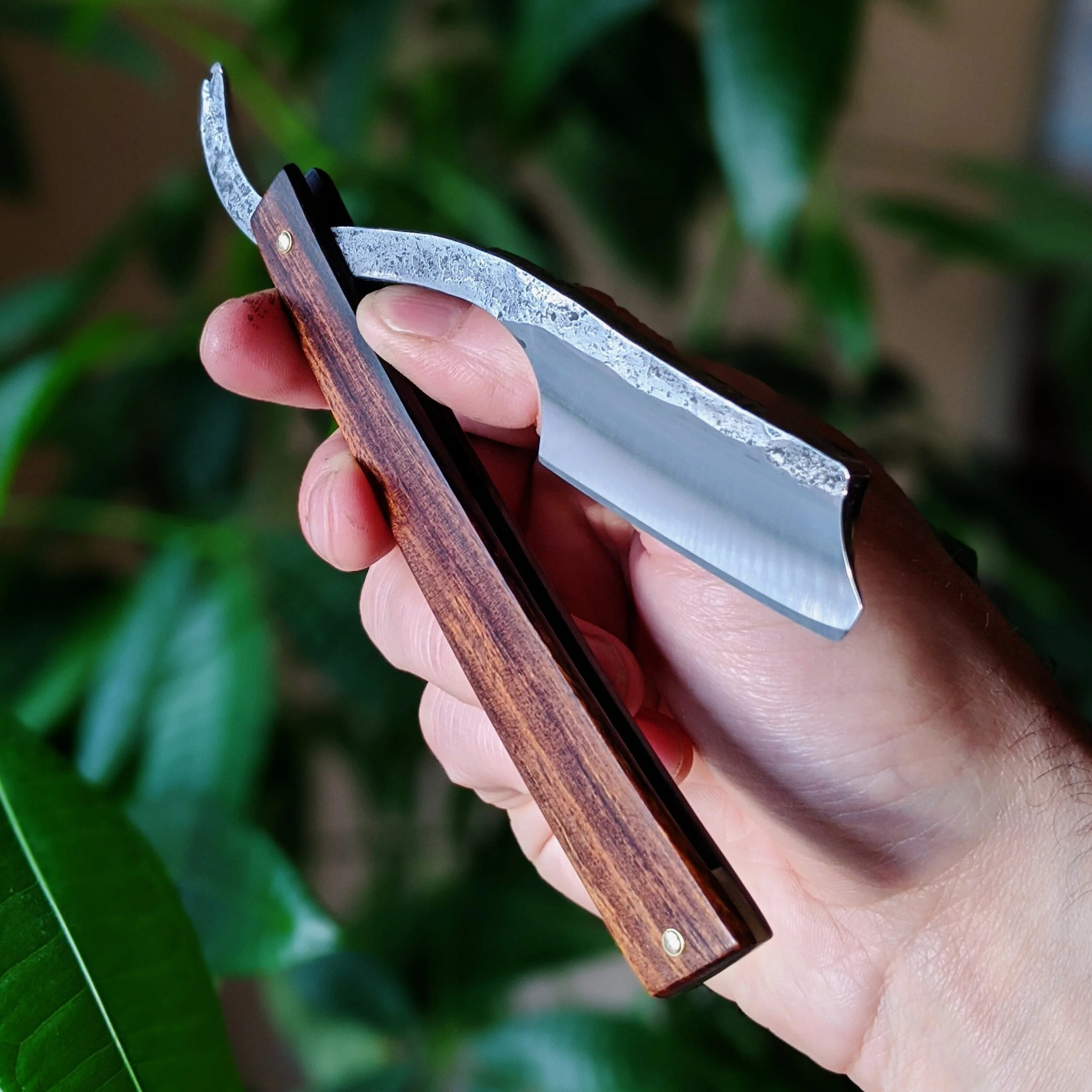These items can go through hell and make it out the other side just fine--a little more worn, a little different, a little rougher, yes. But still full of life--and so can we.
There are a lot of quality blade steels out there. They generally fall into two categories: carbon steel and stainless steel. With proper heat treatment and a skilled hand while grinding, most of the available blade steels in either category can produce a shave-ready razor. So, why might you choose one over the other? In this article, we talk about the romance of carbon steel, why we’ve fallen in love with it, and how to care for yours so that it develops a beautiful patina rather than turn to dust.
It’s Not the Years. It’s the Mileage
Think of classic cars, your great grandfather's hand tools, waxed canvas jackets, cast iron pans, or finely crafted leather shoes. These items, useful in their own right, are uniquely beautiful because of the life and character that their roughness suggests. In many ways, they work better and are more enjoyable to use because of their distressed condition. The mileage shows, and that's alright! You cannot fake the look of an authentic patina. It's an aesthetic derived from experience; one must earn it. These items can go through hell and make it out the other side just fine--a little more worn, a little different, a little rougher, yes. But still full of life--and so can we.
A straight razor is a lifetime investment, a work of functional art designed to transcend multiple generations. Our choice of premium, high-performance materials such as O1 high-carbon tool steel reflects our focus on permanence. But carbon steel requires additional care to maintain compared to stainless steel. Stainless steel razors require no maintenance beyond regular sharpening, will not rust, and are excellent shavers. But for an item destined to be an heirloom, an immaculate finish isn't necessarily preferred. Carbon steels are desirable for more than just their sharpness: they take on a life of their own with time. Smudges and stains accumulate to form a beautiful patina, an oxidized layer that lends character and some corrosion-resistance. Like a fingerprint, this patina is unique to the individual blade and its owner.
What Is Patina? What is Rust?
Patina is different from rust, aka iron oxide. Both form through oxidation of the metal, but rust penetrating deep into the metal will cause permanent damage that shortens the razor's lifespan. Rust is orange-red color and tends to form where moisture has spent sufficient time on the steel. Superficial rust is not the end of the world and is easy to remove through polishing, but keep in mind that polishing will also remove any patina. Even rust that has caused some pitting is not necessarily fatal and, once removed, can add an especially rustic flair. As long as rust does not penetrate through the entire blade and doesn't form near the razor's edge, it isn't catastrophic. So, how does one achieve a beautiful patina without ruining the razor with rust? With time and proper care.
Caring for your carbon steel razor is one of the joys of ownership. Periodic cleaning, sharpening, and oiling of the blade are imperative to maintaining its primary function in the longterm. Routine maintenance is also an opportunity to observe any changes to the patina and appreciate the care and attention to detail in its fabrication.
How to Care for Your Carbon Steel Straight Razor
Proper Handling of Carbon Steel Blades
Carefully strop the razor before and after every shave.
To test the edge's sharpness, try shaving some hair. Avoid touching the edge with a finger, nail, paper, or other materials for testing purposes.
If stropping no longer produces a shave-ready edge, it's time to hone the razor.
Clean the razor after use. Rinse the blade with hot water and wipe clean with soft cotton, microfiber, or suede.
When rinsing the blade, avoid getting water in the scales where it can hide and cause rust. If water makes its way into the scales, dry them carefully with an absorbent cloth and apply a drop of oil to the blade at the pivot.
Proper Storage of Carbon Steel Blades
For long-term storage, apply a drop of light oil to the cleaned blade.
Store your razor in a breathable, moisture-wicking sheath away from sources of humidity.
If storing in a safe or locked cabinet, consider installing a dehumidifying rod to reduce ambient humidity and the chance of rust formation.
Quality, durable goods are made to be used, maintained, and repaired. As time goes on, they come to tell their own story. Every stain, break and mend marks a chapter in its life and that of its owner. What tale will your razor tell?




